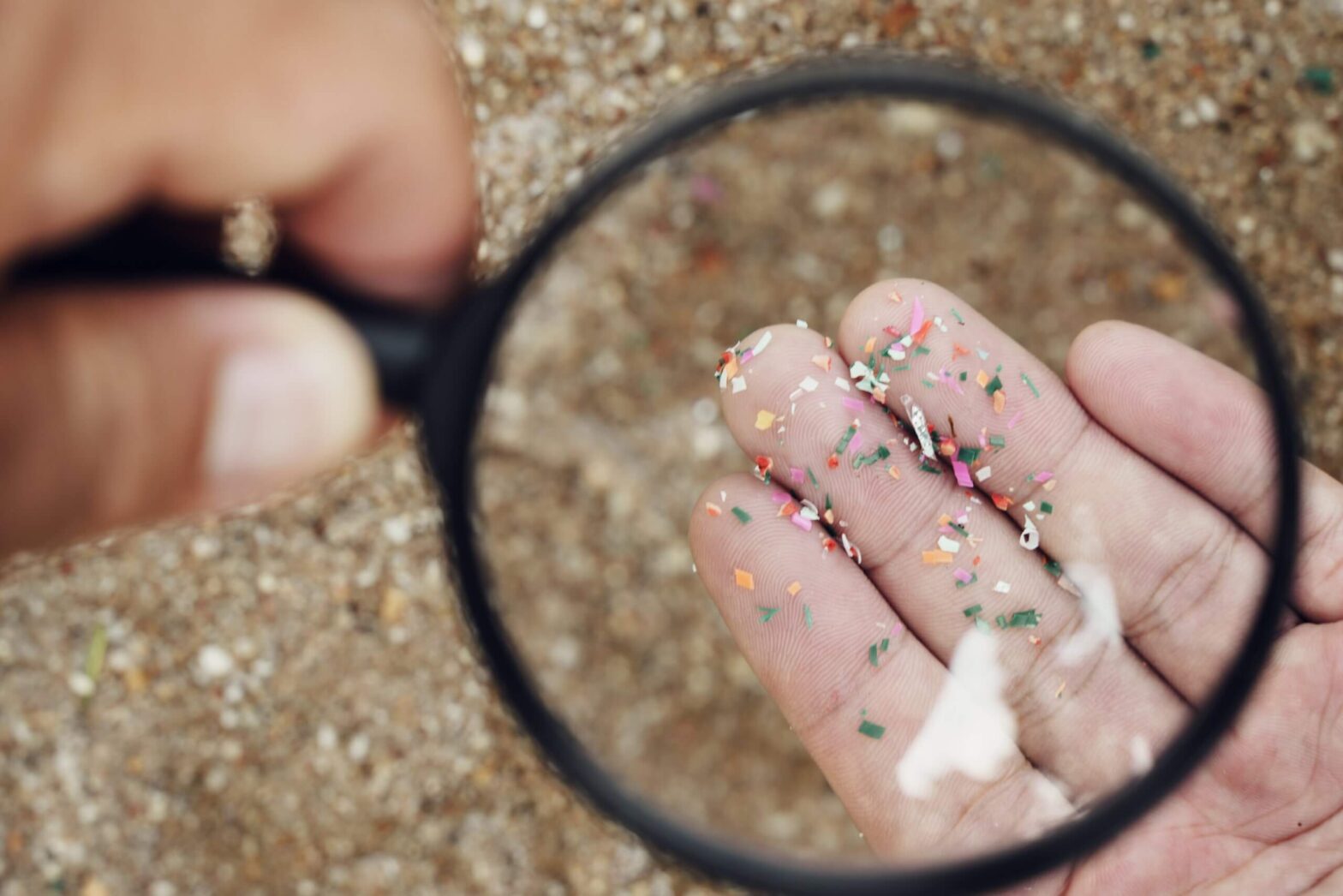Microplastics: Barely visible, yet anything but harmless
A huge amount of tiny plastic particles is currently drifting in the ocean. They are potentially life-threatening for marine life. Once in the ocean, microplastics can no longer be removed. Therefore, it is crucial to prevent them from entering the ocean in the first place.
What is more enjoyable than strolling barefoot on the beach? But what feels so pleasantly rugged and natural under your feet are not just grains of sand. Increasingly, also microplastic particles – plastic particles that are smaller than 5 millimetres in size – get mixed with the sand.
Microplastics on beaches are only a small part of the problem. A far greater quantity can be found in the world´s ocean. There are an estimated 5.25 trillion plastic particles floating on the surface of the ocean, which together weigh 269,000 tonnes. That is equivalent to the weight of about 2,150 blue whales. Bacteria and algae gradually colonise these plastic fragments, which in turn become heavier and sink. Even the depths of the ocean are now contaminated with microplastics.
Large becomes small
Where do all these plastic particles come from? Some of them are industrially produced or so-called primary microplastics. These are pellets, for example, which are used to manufacture new plastic products and can find their way into the environment during transport and the manufacturing process.
Tiny plastic beads, which are added to many cosmetics, skincare and household cleaning products, said to improve their ‘effectiveness’, are also considered primary microplastics. So too, are microfibres released from synthetic textiles when they are washed, or the abrasion from car tyres. In Europe alone, this last source contributes more than 550,000 tonnes of plastic to the environment per year.
Secondary microplastics on the other hand, refer to microparticles that are formed by the breaking up of larger pieces of plastic. The plastics become brittle due to UV rays, wind and waves and break down into progressively smaller pieces. Plastic waste also decomposes in this way in inland waters. The Rhone, for example, washes more than ten kilogrammes of microplastic from Lake Geneva into the Mediterranean every day.
Fatal consequences for marine life
Marine animals live on whatever happens to be in their surroundings. It is not surprising that microplastics get into their bodies – through their mouths when they feed or through their gills when they breathe.
To date, plastic particles have been detected in over a hundred animal species. Studies show that the largest sea creatures, such as the baleen whale, the manta ray or the basking shark, are the most affected. They all feed on plankton and thus ingest huge amounts of microplastics. Coupled with this are toxic additives such as plasticisers. These have an effect similar to hormones and impair fertility. In extreme cases they even cause ovaries to develop in male animals.
Flame retardants are also frequently added to plastic to reduce its flammability. These chemicals are carcinogenic. They are released from the microplastics and can cause tumours in fish. Microplastics also pose a potential injury risk. In smaller animals such as mussels or crabs, the sharp edges of the plastic particles injure the sensitive mucous membranes in the stomach, causing inflammation.
Microplastics are also dangerous for us humans. It has been detected in honey, beer, milk and tap water. Plastics are omnipresent today – from the Alps to the Arctic.
Campaign against microplastics in cosmetic products
Many cosmetic products still contain microplastic particles, even though the manufacturers could as well achieve the desired effect with more natural substances. “Beat the Microbead”, an international campaign comprising more than 60 organisations and with which OceanCare has been involved since 2014, has been working to combat this unacceptable state of affairs. A smartphone app enables consumers to check the ingredients of cosmetics and select products without microplastics. The Codecheck app can also be used to verify additional ingredients.
In Switzerland, OceanCare contacted manufacturers of skincare products in 2015 and subsequently discovered that some had replaced solid microplastics with natural substances such as sugar or silicic acid. Other manufacturers, however, had switched to no less harmful but invisible liquid or gel-like microplastics. As the industry is doing too little on a voluntary basis, OceanCare is advocating for a ban on the use of microplastics in cosmetics and household cleaning products in Switzerland.
Dangerous synthetic fibres
Synthetic clothing such as fleece jackets loses millions of microfibres with every wash. If these are not filtered, they enter the water cycle. When buying new textiles, make sure they do not contain synthetic fibres. Synthetic materials that you already own can be washed in a guppyfriend bag, which is designed to trap microfibres.
In 2018, OceanCare has participated in the consultations on the EU Commission´s directive on eco-design and energy label requirements. We argued that the installation of microfiber filters in washing machines and tumble dryers should become compulsory for certified manufacturers. The adoption of such a directive would significantly reduce the amount of microplastics found in waterways across Europe.
Microplastics are a major threat to marine life. We can all contribute to reducing the number of particles entering the water through our behaviour. And we all should do so.
Infograph on Microplastics

